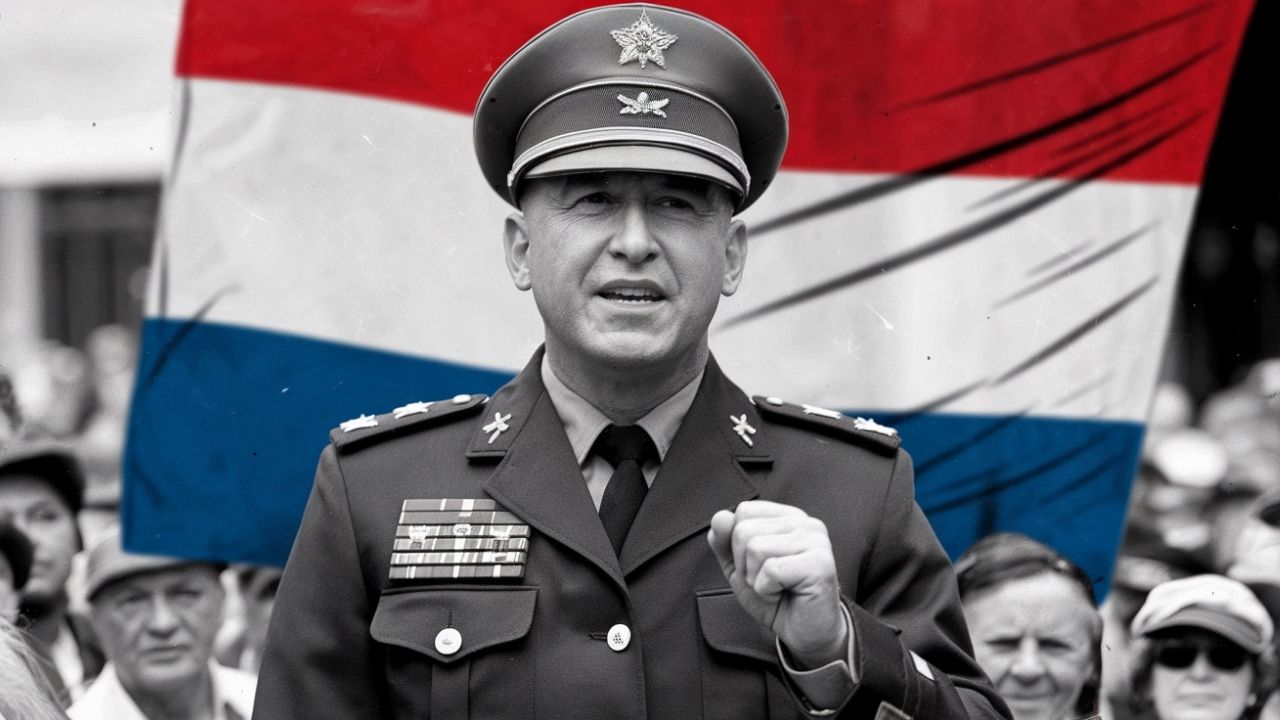
What happened during the Paraguayan Coup D'État? The Paraguayan Coup D'État of 1989 was a pivotal moment in the country's history. General Andrés Rodríguez led a military revolt against President Alfredo Stroessner, who had ruled Paraguay with an iron fist for 35 years. The coup began on February 2, 1989, and swiftly escalated into a full-blown conflict. Stroessner's regime, known for its oppressive tactics, crumbled within hours. Rodríguez's forces captured key locations, including the presidential palace. By the next day, Stroessner was ousted and fled to Brazil. This coup ended one of Latin America's longest dictatorships, paving the way for democratic reforms and a new era in Paraguayan politics.
Key Takeaways:
- The Paraguayan Coup D'État in 1989 ended a 35-year dictatorship, leading to a return to democracy, economic reforms, and improvements in human rights, shaping Paraguay's future.
- General Andrés Rodríguez led a bloodless coup, paving the way for political stability, economic growth, and cultural changes, including media freedom and advancements in women's and indigenous rights.
The Paraguayan Coup D'État: A Turning Point in History
The Paraguayan Coup D'État is a significant event that reshaped the country's political landscape. Understanding its details provides insight into Paraguay's turbulent history.
-
Occurred in 1989: The coup took place on February 3, 1989, marking the end of Alfredo Stroessner's 35-year dictatorship.
-
Led by Andrés Rodríguez: General Andrés Rodríguez, a former ally of Stroessner, led the coup. His actions were pivotal in overthrowing the regime.
-
Bloodless Transition: Despite the dramatic change, the coup was relatively bloodless, with minimal casualties compared to other coups in Latin America.
-
Stroessner's Exile: After the coup, Stroessner fled to Brazil, where he lived in exile until his death in 2006.
Political Climate Before the Coup
The political environment in Paraguay before the coup was tense and oppressive. Stroessner's regime was marked by strict control and limited freedoms.
-
Authoritarian Rule: Stroessner's government was known for its authoritarian practices, including censorship and political repression.
-
Economic Struggles: The country faced significant economic challenges, with widespread poverty and limited development.
-
Human Rights Violations: Numerous human rights abuses occurred under Stroessner's rule, including torture and disappearances.
-
Opposition Suppressed: Political opposition was harshly suppressed, with many opponents jailed or exiled.
The Coup's Immediate Aftermath
The immediate aftermath of the coup brought significant changes to Paraguay's political and social landscape.
-
Return to Democracy: The coup paved the way for a return to democratic governance, with free elections held in 1993.
-
New Constitution: A new constitution was adopted in 1992, establishing a framework for democratic governance and human rights protections.
-
Economic Reforms: The new government implemented economic reforms aimed at stabilizing the economy and promoting growth.
-
Human Rights Improvements: Efforts were made to address past human rights abuses and improve the overall human rights situation in the country.
Long-term Impact on Paraguay
The long-term impact of the coup has been profound, influencing Paraguay's development and political trajectory.
-
Political Stability: The coup led to greater political stability, with regular elections and peaceful transitions of power.
-
Economic Growth: Paraguay has experienced steady economic growth since the coup, with improvements in infrastructure and living standards.
-
International Relations: The country has strengthened its international relations, becoming more integrated into the global community.
-
Civil Society: A more vibrant civil society has emerged, with greater freedom of expression and association.
Key Figures in the Coup
Several key figures played crucial roles in the coup and its aftermath, shaping Paraguay's future.
-
Alfredo Stroessner: The long-time dictator whose regime was overthrown by the coup.
-
Andrés Rodríguez: The general who led the coup and later became president, guiding the country through its transition.
-
Juan Carlos Wasmosy: The first civilian president elected after the coup, serving from 1993 to 1998.
-
Lino Oviedo: A military leader involved in the coup who later became a controversial political figure.
Cultural and Social Changes
The coup also brought about significant cultural and social changes, influencing various aspects of Paraguayan life.
-
Media Freedom: Media freedom increased, with a more diverse and independent press emerging.
-
Education Reforms: Educational reforms were implemented, improving access to education and literacy rates.
-
Women's Rights: Progress was made in advancing women's rights, with greater participation of women in politics and society.
-
Indigenous Rights: Efforts were made to recognize and protect the rights of indigenous peoples, promoting cultural diversity.
-
Artistic Expression: The period after the coup saw a flourishing of artistic expression, with greater freedom for artists and cultural activities.
Reflecting on the Paraguayan Coup D'État
The Paraguayan Coup D'État of 1989 marked a pivotal moment in the nation's history. This event ended Alfredo Stroessner's 35-year dictatorship, bringing significant political change. The coup was swift, lasting only a few hours, but its impact was profound. It led to the establishment of a democratic government, which was a major shift for Paraguay.
Understanding these facts helps grasp the complexities of Paraguay's political landscape. The coup didn't just change the government; it altered the course of the country's future. It paved the way for democratic reforms and greater political freedom.
Learning about such historical events is crucial. It reminds us of the importance of democracy and the struggles many nations face to achieve it. The Paraguayan Coup D'État is a testament to the resilience and determination of people striving for a better future.
Frequently Asked Questions
Was this page helpful?
Our commitment to delivering trustworthy and engaging content is at the heart of what we do. Each fact on our site is contributed by real users like you, bringing a wealth of diverse insights and information. To ensure the highest standards of accuracy and reliability, our dedicated editors meticulously review each submission. This process guarantees that the facts we share are not only fascinating but also credible. Trust in our commitment to quality and authenticity as you explore and learn with us.
